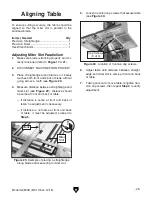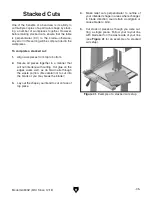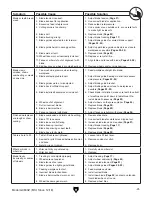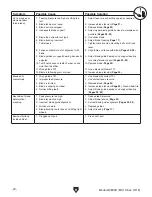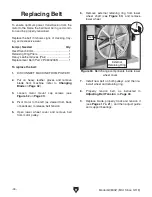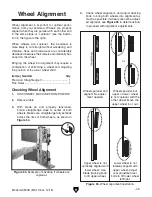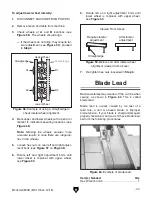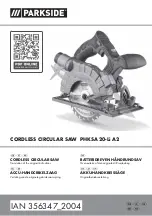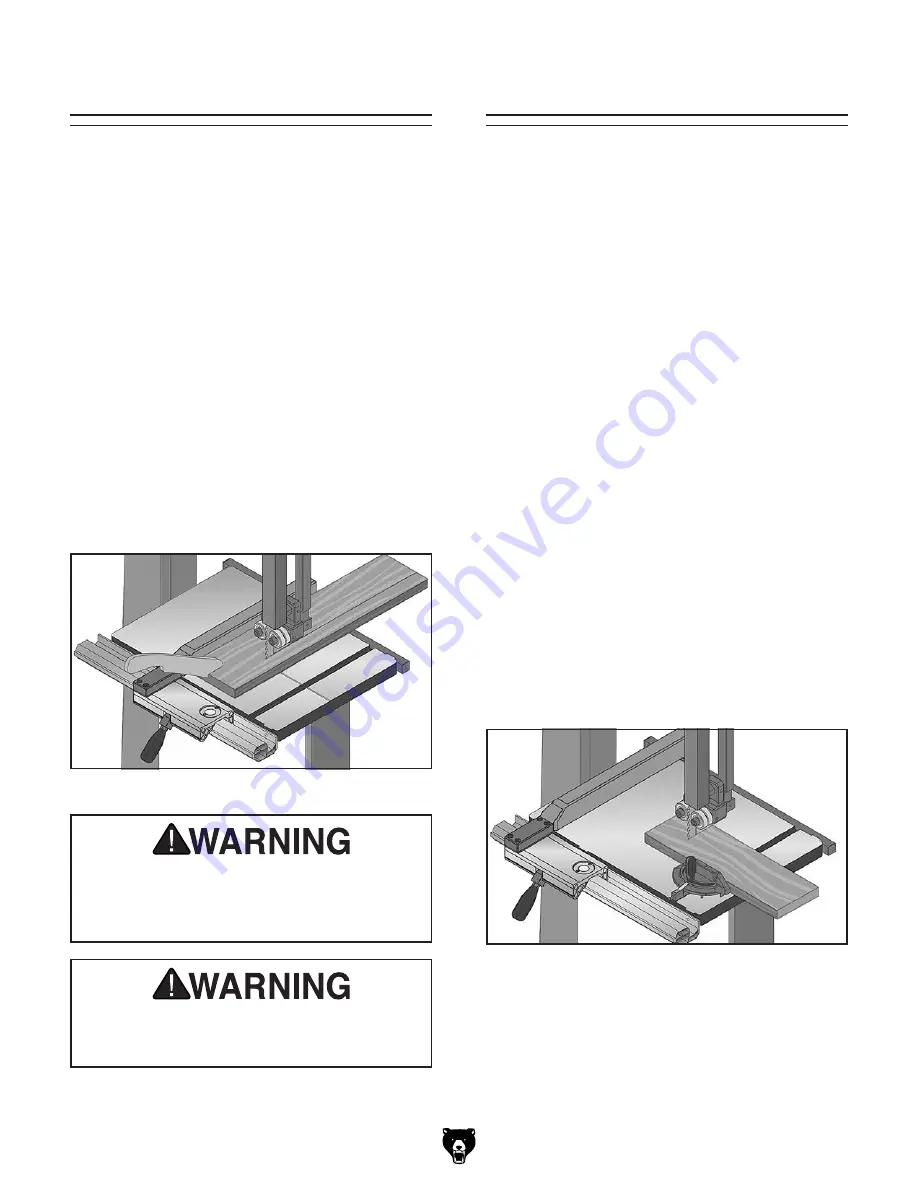
Model G0803Z (Mfd. Since 12/18)
-33-
"Ripping" means cutting with the grain of the
wood stock. For plywood and other processed
wood, ripping simply means cutting down the
length of the workpiece. Beveled rip cuts may be
performed by tilting the table.
To make a rip cut:
1. Adjust fence to match width of cut on your
workpiece, then lock fence in place.
2. Adjust blade guide assembly to proper height
above workpiece.
3. After all safety precautions have been met,
turn bandsaw
ON and wait for it to come to
full speed. Slowly feed workpiece into blade
until blade is completely through workpiece.
Figure 38 shows an example of a ripping
operation.
Ripping
Figure 38. Example of a ripping operation.
NEVER place fingers or hands in the line of
cut. If you slip, your hands or fingers may
go into the blade and may be cut.
ALWAYS use a push stick when ripping
narrow pieces. Failure to follow these
warnings may result in amputation or
laceration injuries!
Crosscutting is the process of cutting across the
grain of wood. For plywood and other processed
wood, crosscutting simply means cutting across
the width of the material. Crosscuts can be 90° or
angled using the miter gauge. Compound cross-
cuts are those where the miter is angled and the
table tilted.
To make a crosscut:
1. Mark workpiece on edge where you want to
begin cut.
2. Adjust the blade guide assembly to the cor-
rect height.
3. Adjust the miter gauge to the correct angle
needed for cut.
4. Move fence out of the way. Place workpiece
evenly against miter gauge, then line up mark
with blade.
5. After all safety precautions have been met,
turn bandsaw
ON and wait for it to come
to full speed. Slowly feed workpiece into
the blade until blade is all the way through
workpiece.
Figure 39 shows an example of a
crosscutting operation.
Crosscutting
Figure 39. Example of a crosscutting operation
with the miter gauge.
Summary of Contents for G0803Z
Page 60: ......







